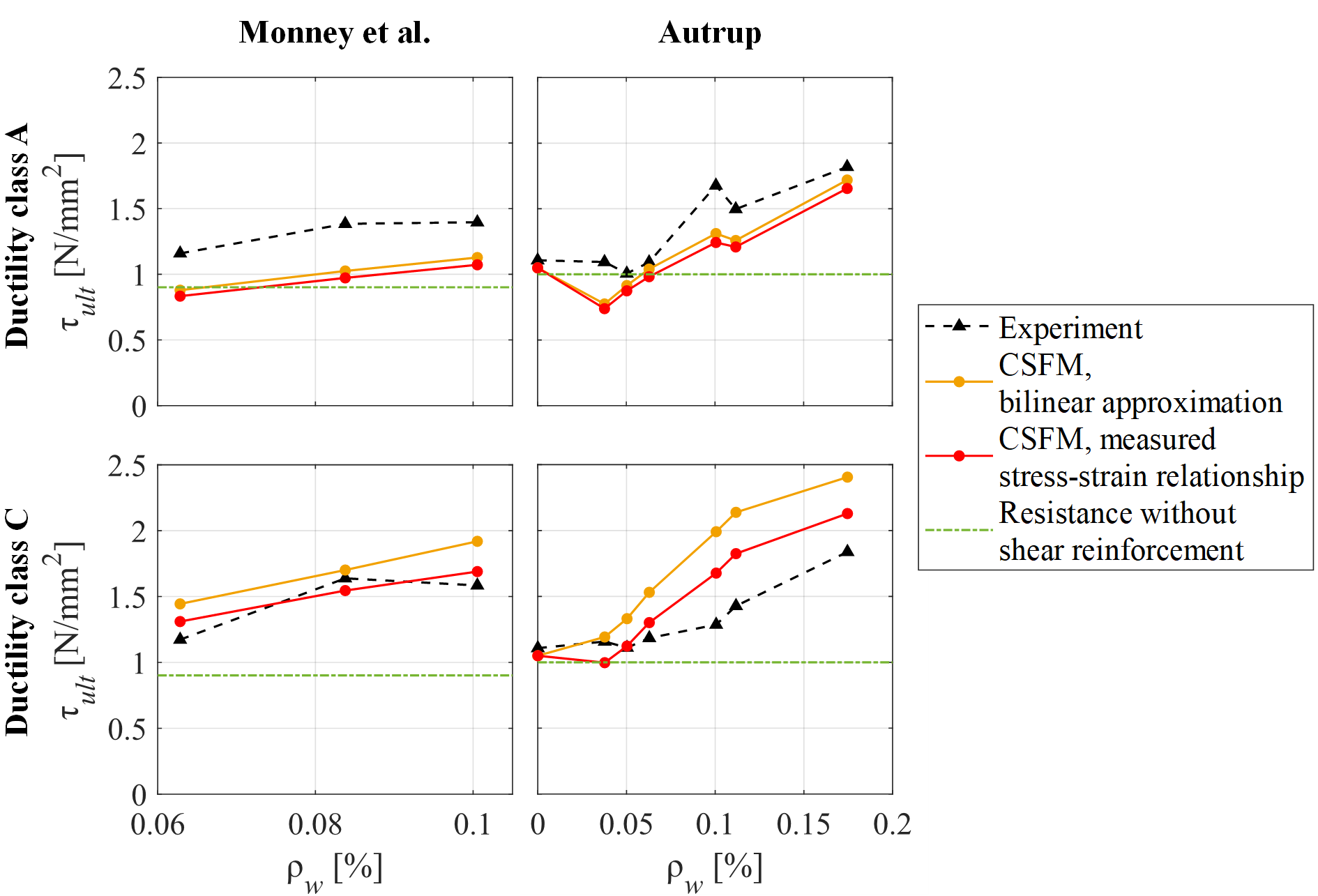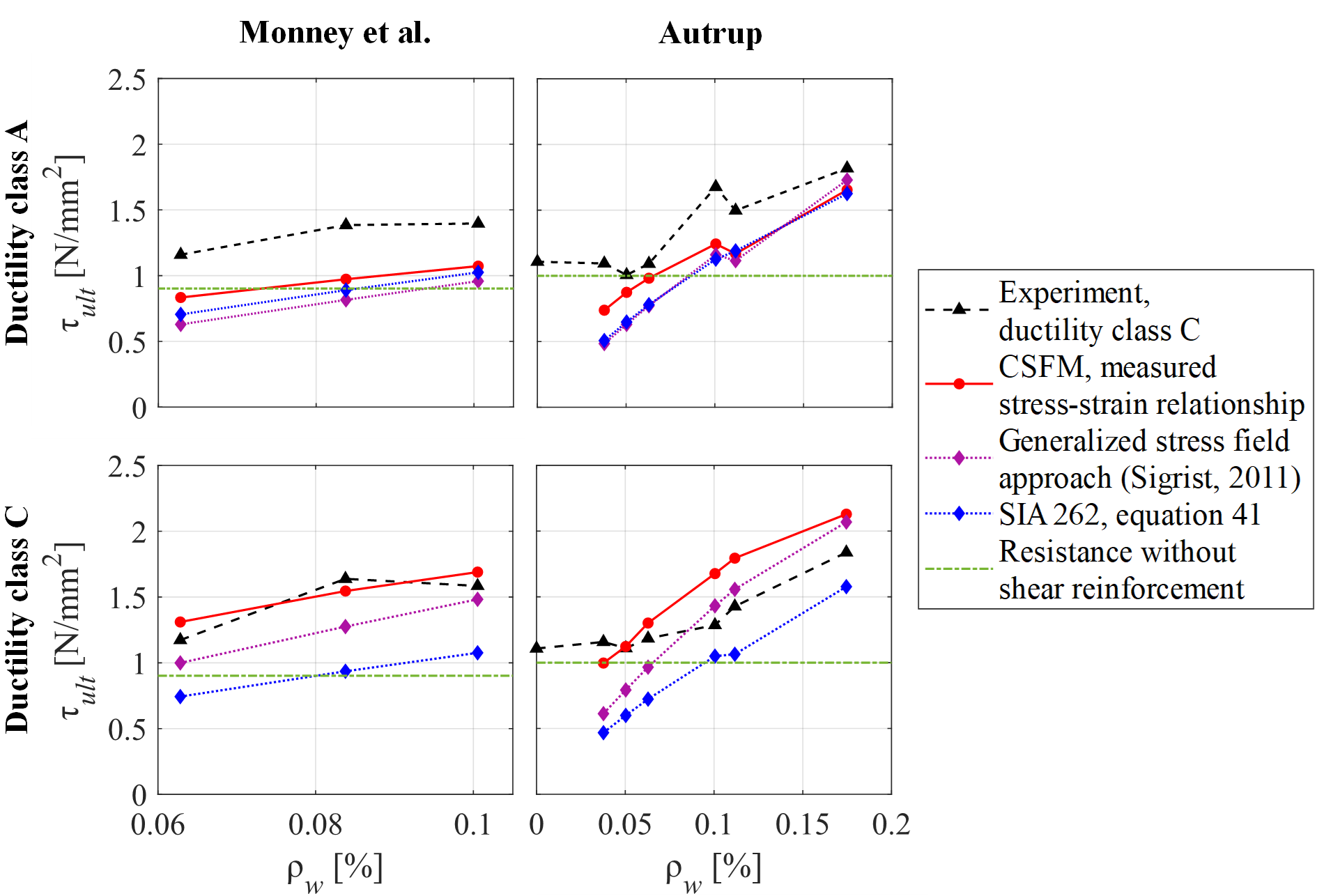Exploring the limits of applicability of stress fields to assess RC structures
Author: Davide Bianchi
Language: English
Abstract
Many approaches to designing reinforced concrete structures are based on the theory of plasticity, which, for a safe application requires a sufficient deformation capacity. However, when assessing existing structures, the amount of shear reinforcement is oftentimes low, which strongly limits the ductility of such members. Therefore, the requirements for the safe application of the existing shear models, mostly relying on the theory of plasticity, may not be given in general. This thesis thus aims to explore the limits of applicability of existing shear models, particularly regarding their ability to safely assess the shear resistance of existing structures with a low amount of shear reinforcement.
The approach used in this thesis consists of comparing different existing shear models to experiments from the literature. Thereby, the variable truss angle models (VTA) suggested in SIA 262 and Eurocode 2, the Generalized Stress Field Approach (GSFA) suggested by Sigrist and the Compatible Stress Field Method (CSFM) are considered. On the other hand, the analysed experiments consist of three-point bending tests on beams with a rectangular cross-section and a shear reinforcement ratio between 0% and 0.2%.
Except for the refined approach according to FprEN 1992 1 1:2022, the code models give a safe estimation of the shear strength, however, being strongly conservative in many cases. On the other hand, due to a more detailed consideration of the deformation capacity, the GSFA captures the experimental results well. The GSFA thus performs significantly better than the VTA models, especially for stirrups with a high ductility. Finally, the CSFM accurately predicts the shear resistance, provided that the average stirrup strain at rupture is correctly determined. Thereby, the crack spacing predicted by the pull-out model turns out to yield reasonable results. For the stress-strain relationship of the steel, not the ultimate strain of the bare steel, but the area above the stress-strain curve in the inelastic range is decisive. Thus, in order to avoid an overestimation in the shear strength, a bilinear approximation should preserve this area instead of preserving the ultimate strain as usually done.
However, the model comparison reveals that the GSFA and the CSFM overestimate the influence of the ductility class of the stirrups on the shear resistance. This issue might be related to the simplified bond shear stress-slip relationship assumed by the tension chord model and has to be examined in more detail in further research.


